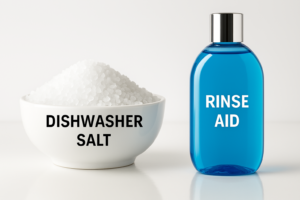What is Dishwasher Salt?
Dishwasher salt is a specially formulated coarse-grained salt used to soften hard water inside the dishwasher. By reducing water hardness, it prevents limescale buildup, helps avoid water spots on dishes, and enhances the overall cleaning performance and longevity of your appliance.
Why Do You Need Dishwasher Salt?
Dishwashing relies on a combination of water and detergent to remove dirt, grease, and food residues from your dishes. But before the actual cleaning begins, the quality of water used also matters just as much as the detergent.
In areas with hard water, it can leave spots on dishes, reduce cleaning performance, and even cause long-term damage to the dishwasher. That’s why water softening is crucial before the wash cycle begins.
This is where dishwasher salt becomes essential. It supports the internal water-softening process, resulting in improved cleaning efficiency, spot-free dishes, and a longer-lasting dishwasher.
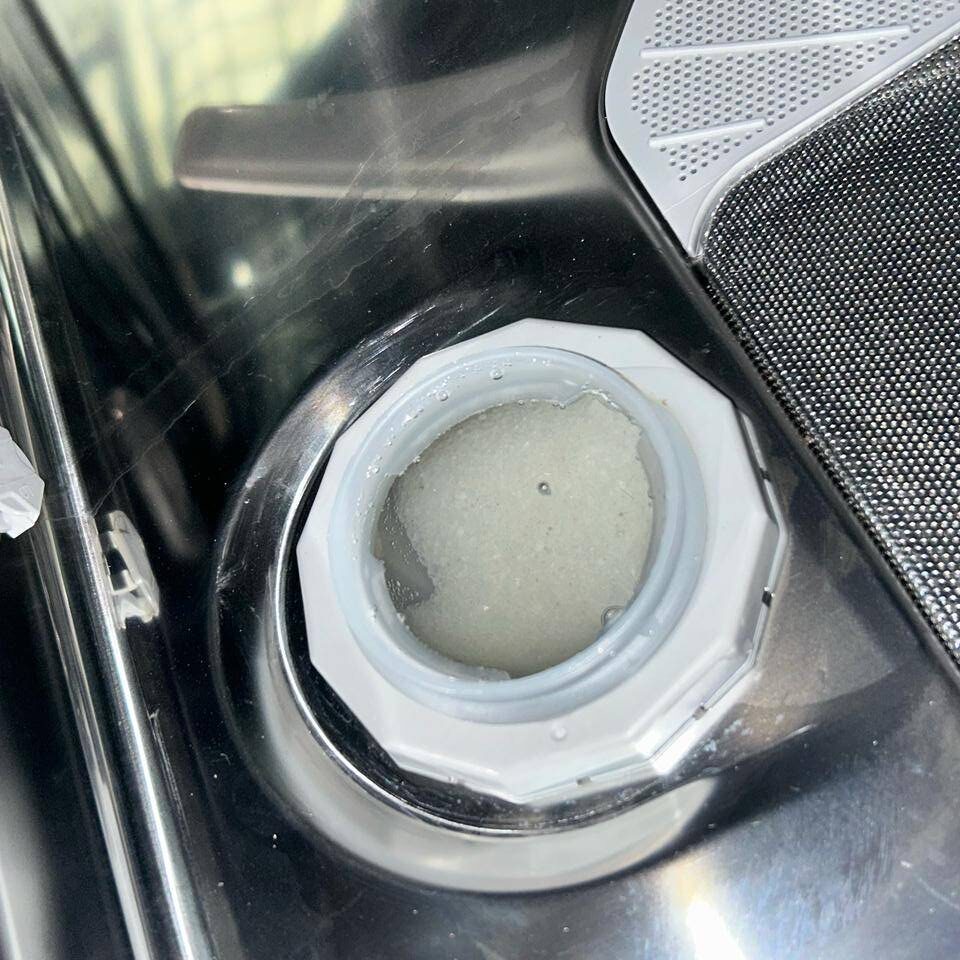
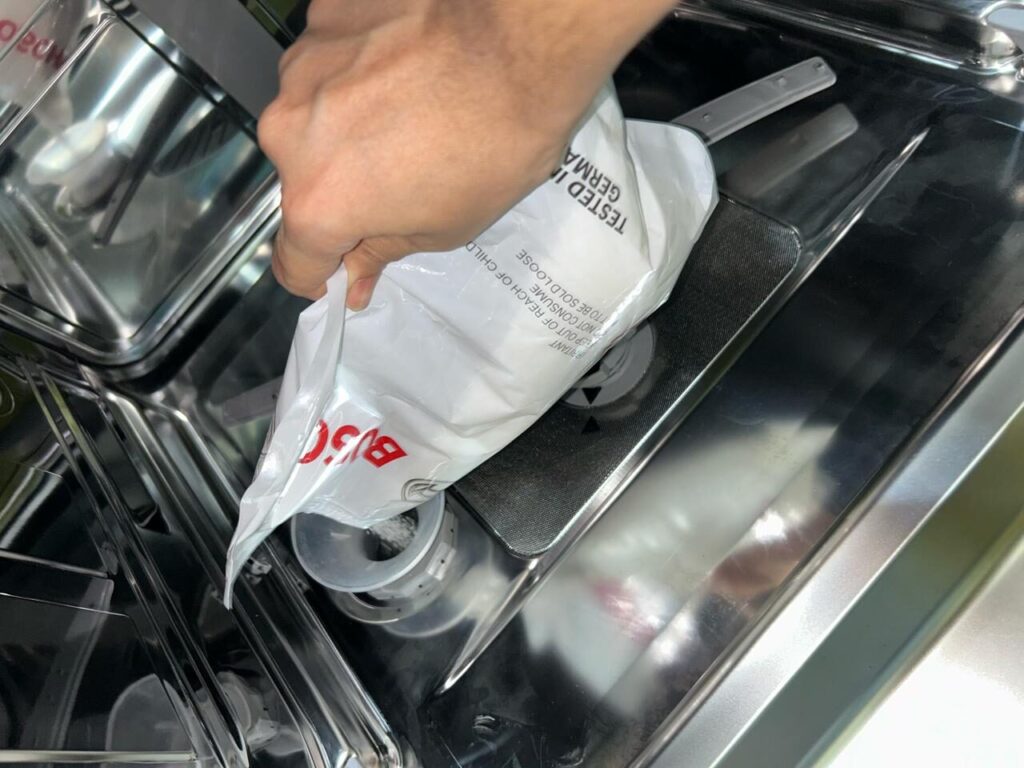
What Does Dishwasher Salt Actually Do?
Dishwashers need soft water to clean effectively. Here’s why:
Hard water contains high levels of minerals, especially calcium and magnesium, which cause several problems:
- It leaves spots or streaks on dishes.
- It causes limescale buildup inside the dishwasher, which gradually reduces performance and shortens the appliance’s lifespan.
- It affects detergent performance — minerals in hard water interfere with the cleaning action, meaning you may need to use more detergent to get the same results.
So, it’s clear that softening hard water is a necessary process, and that’s exactly what dishwasher salt is designed to do.
The main role of dishwasher salt is to soften hard water. When the water is softened, the following benefits are achieved:
✔ Spot-free dishes: Since the water is softened, there’s no more issue of spots or streaks after cleaning.
✔ No limescale buildup: Dishwasher salt prevents limescale from forming on internal parts, maintaining performance and extending lifespan.
✔ Better detergent performance: Soft water allows detergent to work more efficiently, so you get better cleaning even with a smaller amount.
In short, dishwasher salt not only improves cleaning results but also helps:
- Reduce detergent usage (avoiding overdose)
- Maintain a clean and efficient machine
- Deliver a spotless, polished finish on your dishes
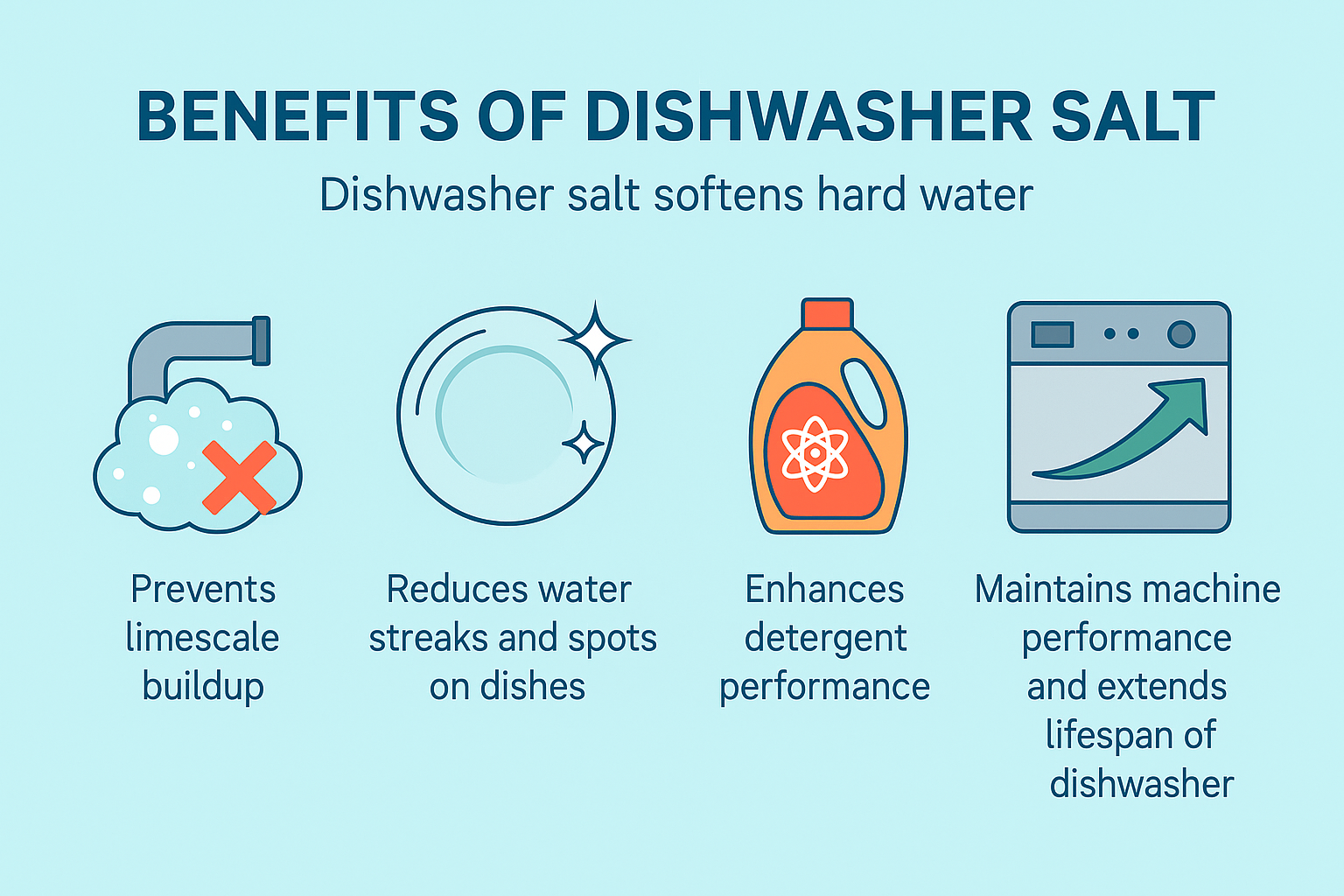
Quick Comparison: Hard Water Problem vs. Dishwasher Salt Solution
| Problems Caused by Hard Water | Solution Provided by Dishwasher Salt |
|---|---|
| Spots and streaks on dishes | Softens water → Spot-free, clean dishes |
| Limescale buildup | Prevents limescale → Maintains performance, extends lifespan |
| Ineffective detergent | Boosts detergent → Less detergent needed, better results |
Dishwasher Salt Ingredients
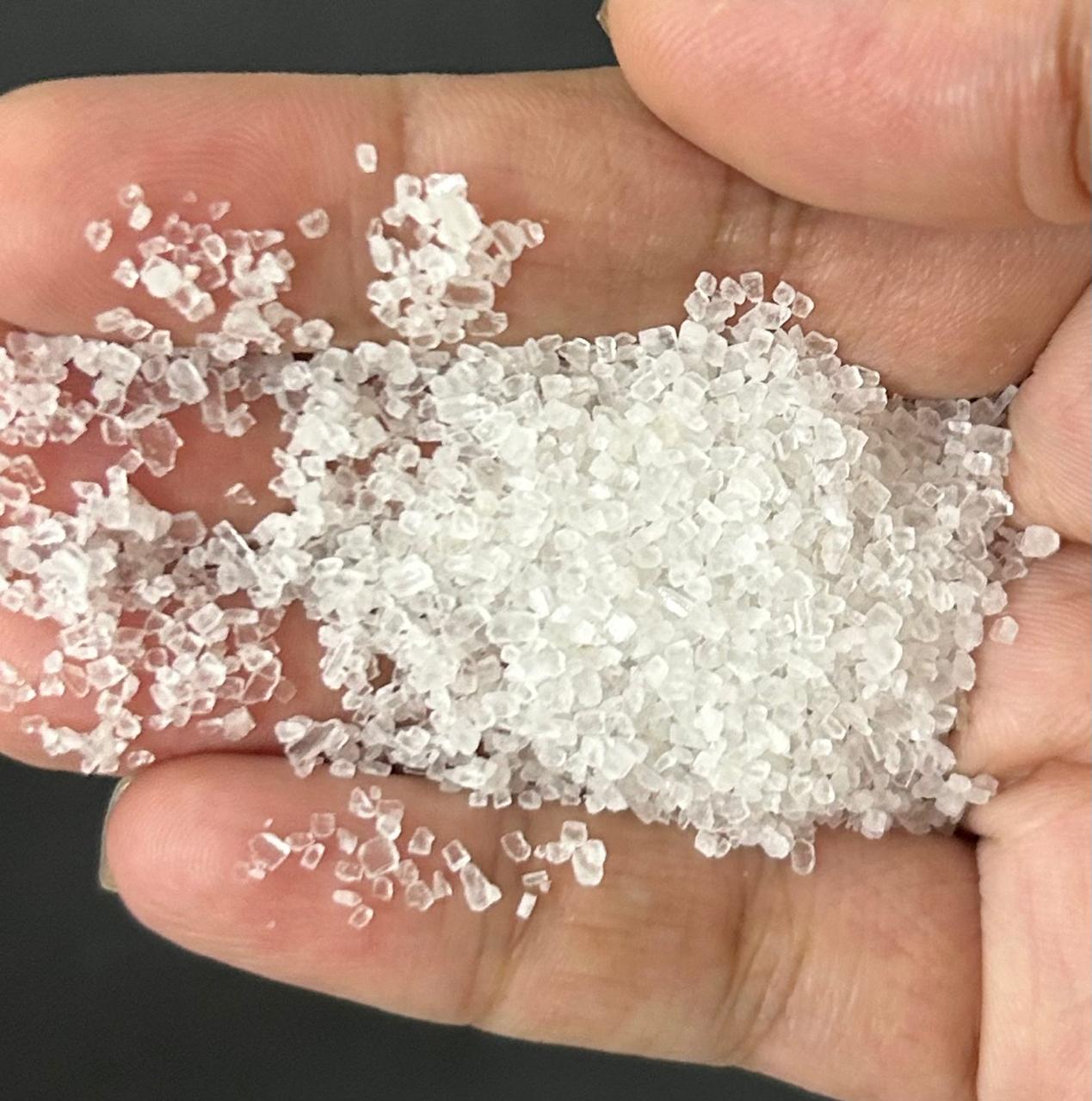 Dishwasher salt is primarily made of sodium chloride, just like regular table salt.
However, they are not the same.
Dishwasher salt is primarily made of sodium chloride, just like regular table salt.
However, they are not the same.
- Dishwasher salt has larger granules, which dissolve slowly and evenly. This allows it to work effectively in the softening unit without causing blockages.
- Table salt is much finer, which can clog the salt tank and interfere with the softening process.
How Does Dishwasher Salt Work to Soften Hard Water?
Before the main washing cycle begins, dishwashers equipped with a water softening system use a process called ion exchange to treat hard water. This process occurs within the ion exchange resin, where calcium (Ca²⁺) and magnesium (Mg²⁺) ions—responsible for water hardness—are exchanged with sodium (Na⁺) ions.
The supply of sodium ions comes from the dishwasher salt reservoir. Regularly refilling the salt reservoir ensures a consistent supply of sodium ions, allowing the ion exchange process to function effectively keeping your water soft and your dishwasher running efficiently.
Maintaining soft water is crucial for optimal dishwasher performance. Soft water enhances detergent efficiency, prevents limescale buildup on internal components, and results in cleaner, spot-free dishes.
Where to Put Dishwasher Salt and How Often to Refill It

Dishwasher salt should be added to the salt reservoir, which is typically located at the bottom of the dishwasher, underneath the lower rack, near the filter area.
It’s not necessary to refill the salt before every wash. Instead, only refill it when your dishwasher indicates that it’s needed.
Many modern dishwashers feature refill indicators on the control panel or send notifications to your phone (if supported by the model).
- Dishwasher Salt Indicator: Refill the salt when an “S” symbol appears on the control panel.
By keeping an eye on these alerts, you can ensure your dishwasher performs efficiently without overusing salt.

FREQUENTLY ASKED QUESTIONS
Can I Use Table Salt in My Dishwasher?
No, it’s not recommended.
Dishwasher salt is specially formulated for the water softening process and has a coarse grain size that prevents it from blocking the softener unit inside your dishwasher.
In contrast, regular table salt is much finer which can clog the softening unit and potentially damage the machine over time.
Do I Need Dishwasher Salt If I Use Tablets?
Yes — even if you’re using all-in-one dishwasher tablets, it’s still recommended to use dishwasher salt separately.
While these tablets do contain a small amount of salt, it’s often not enough for softening process, especially in areas with hard water. Using dishwasher salt ensures effective water softening, which helps:
-
Prevent water streaks on dishes
-
Improve overall cleaning performance
- Extend your dishwasher’s lifespan
Do I Need Dishwasher Salt in Soft Water Areas?
Yes — even if you live in a soft water area, it’s still important to keep some dishwasher salt in the reservoir.
Since the water is already soft, the refill frequency will be much lower compared to hard water areas. However, maintaining salt in the reservoir ensures that the water softening unit functions properly when needed and helps avoid unexpected issues.
What’s the Difference Between Rinse Aid and Dishwasher Salt?
Dishwasher salt is used to soften hard water, helping prevent mineral buildup—especially from calcium and magnesium—inside your machine. This protects internal components like the water softener unit and improves overall cleaning performance.
Rinse aid, on the other hand, is used during the final rinse cycle to help water glide off dish surfaces. This minimizes water spots and streaks, leaving your dishes clean, shiny, and streak-free.
